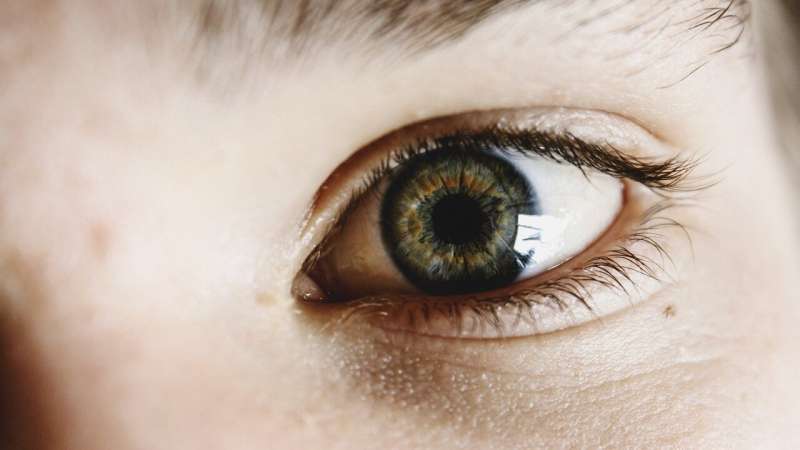This article has been reviewed according to Science X's editorial process and policies. Editors have highlighted the following attributes while ensuring the content's credibility:
fact-checked
peer-reviewed publication
trusted source
proofread
Children with 'lazy eye' at increased risk of serious disease in adulthood, suggests study

Adults who had amblyopia ('lazy eye') in childhood are more likely to experience hypertension, obesity, and metabolic syndrome in adulthood, as well as an increased risk of heart attack, according to a new study led by UCL researchers.
In publishing the study in eClinicalMedicine, the authors stress that while they have identified a correlation, their research does not show a causal relationship between amblyopia and ill health in adulthood.
The researchers analyzed data from more than 126,000 participants aged 40 to 69 years old from the UK Biobank cohort, who had undergone ocular examination.
Participants had been asked during recruitment whether they were treated for amblyopia in childhood and whether they still had the condition in adulthood. They were also asked if they had a medical diagnosis of diabetes, high blood pressure, or cardio/cerebrovascular disease (i.e. angina, heart attack, stroke).
Meanwhile, their BMI (body mass index), blood glucose, and cholesterol levels were also measured, and mortality was tracked.
The researchers confirmed that from 3,238 participants who reported having a 'lazy eye' as a child, 82.2% had persistent reduced vision in one eye as an adult.
The findings showed that participants with amblyopia as a child had 29% higher odds of developing diabetes, 25% higher odds of having hypertension, and 16% higher odds of having obesity. They were also at increased risk of heart attack—even when other risk factors for these conditions (e.g., other diseases, ethnicity, and social class) were taken into account.
This increased risk of health problems was found not only among those whose vision problems persisted but also to some extent in participants who had had amblyopia as a child and 20/20 vision as an adult, although the correlation was not as strong.
Corresponding author, Professor Jugnoo Rahi (UCL Great Ormond Street Institute for Child Health, UCL Institute of Ophthalmology and Great Ormond Street Hospital), said, "Amblyopia is an eye condition affecting up to four in 100 children. In the UK, all children are supposed to have vision screening before the age of five to ensure a prompt diagnosis and relevant ophthalmic treatment."
"It is rare to have a 'marker' in childhood that is associated with increased risk of serious disease in adult life, and also one that is measured and known for every child—because of population screening."
"The large numbers of affected children and their families may want to think of our findings as an extra incentive for trying to achieve healthy lifestyles from childhood."
Amblyopia is when the vision in one eye does not develop properly and can be triggered by a squint or being long-sighted.
It is a neurodevelopmental condition that develops when there's a breakdown in how the brain and the eye work together, and the brain can't properly process the visual signal from the affected eye. As it usually causes reduced vision in one eye only, many children don't notice anything wrong with their sight and are only diagnosed through the vision test done at four to five years of age.
A recent report from the Academy of Medical Sciences involving some researchers from the UCL Great Ormond Street Institute for Child Health called on policymakers to address the declining physical and mental health of children under five in the UK and prioritize child health.
The team hopes that their new research will help reinforce this message and highlight how child health lays the foundations for adult health.
First author, Dr. Siegfried Wagner (UCL Institute of Ophthalmology and Moorfields Eye Hospital), said, "Vision and the eyes are sentinels for overall health—whether heart disease or metabolic dysfunction, they are intimately linked with other organ systems. This is one of the reasons why we screen for good vision in both eyes."
"We emphasize that our research does not show a causal relationship between amblyopia and ill health in adulthood. Our research means that the 'average' adult who had amblyopia as a child is more likely to develop these disorders than the 'average' adult who did not have amblyopia. The findings don't mean that every child with amblyopia will inevitably develop cardiometabolic disorders in adult life."
More information: Siegfried Wagner et al, Associations between unilateral amblyopia in childhood and cardiometabolic disorders in adult life: a cross-sectional and longitudinal analysis of the UK Biobank, eClinicalMedicine (2024). DOI: 10.1016/j.eclinm.2024.102493


















